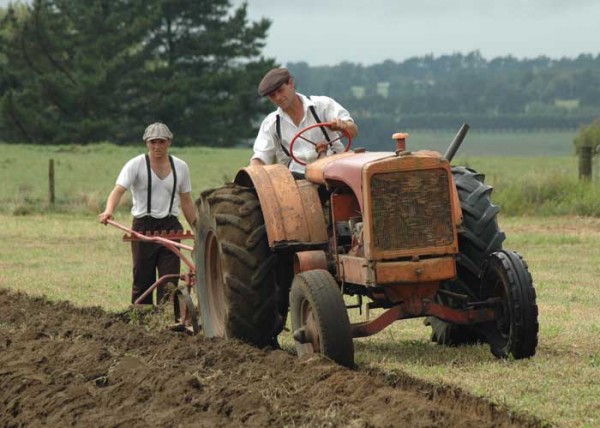The engineering and product development staff at Steiner Tractor Parts work with modern technology to re-engineer obsolete parts for antique tractor restoration that have been unavailable to enthusiasts for many years.
Imagine having painstakingly taken apart an antique tractor, sandblasting it, painting every piece, only to start reassembling it to ensure every piece looks just like it came from the factory fifty years ago—only to stumble across a fundamentally broken tractor part. At that point, you used to be left with only two, equally imperfect options: try to fix it knowing it won’t ever be able to operate at maximum efficiency or go hunting a used or new old stock part which may be impossible to find in good condition or incredibly pricey. This is exactly where Dan Steiner and the staff of Steiner Tractor Parts step in to save the antique tractor restoration. Steiner and his staff are using cutting edge technology like a 3D printer, CAD software and an x-ray spectrometer for materials analysis to keep the antique tractor restoration hobby alive.
The product development team identifies problem parts needed by antique tractor owners that are not widely available for various reasons. Then the engineering staff begins figuring out exactly how they are made, producing the blueprints necessary to make them in modern factories. Working with a global supply chain has its share of difficulties and Steiner Tractor Parts strives to use American labor and American factories whenever feasible for a project.
“In the old days all parts were drawn by hand. Wooden cores were made by hand. Staff manually operated the Bridgeport and horizontal mills by hand along with the lathe. Today, parts are drawn in Solid Works. Then math data is sent to the 3D printer to make a plastic prototype. After approval of the prototype, the files are sent to manufacturers who use the math data to program the CNC mills, lathes, laser cutters, plasma jets, water jets and other computer operated equipment. As a result the parts have much tighter tolerances and less variation. The quality is improved and the efficiencies reduce cost. Many people do not realize it, but the volume of manufacturing in America is larger than it has ever been. However, it is done with far less labor due to the use of robots and computer controlled equipment,” explains Dan Steiner, President of Steiner Tractor Parts.
Steiner Tractor Parts is committed to continuing to serve the tractor restoration community. The work does not stop at simply developing and designing the products, the company also conducts their own quality assurance for each part that is produced. In addition, they provide written and video documentation to customers to help them install the parts and fully complete their restoration project. They are committed to providing obsolete components for Allis Chalmers, Farmall, International, Ford, John Deere and Massey Ferguson, among others. Areas of specialty include manifolds, wheels, lights, switches, mufflers, battery boxes, fenders, steering wheels, carburetors, gauges, and more. To see the full product listing and E-Catalog, visit online at https://www.steinertractor.com. Also, be sure to check out their selection of free tractor repair videos at https://www.steinertractor.tv.

